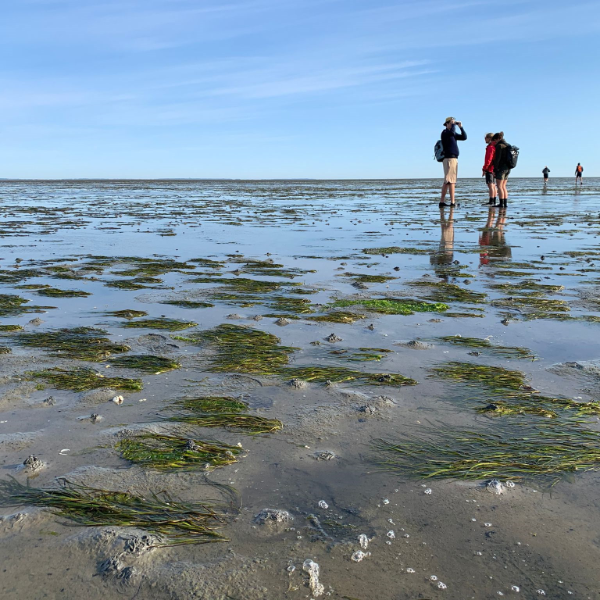Seagrass restoration Wadden Sea

Seagrass restoration Wadden Sea
Seagrass is a vital part of underwater ecology and land protection by reducing land erosion. Due to the construction of waterworks, emergence of weed diseases and deteriorating water quality, seagrass had disappeared in most Dutch waters. Fortunately, the tide is turning and this useful plant has been making a (tentative) comeback for years.
Various initiatives to restore seagrass meadows have taken place over the past decades. One such recent and successful project was an initiative by Natuurmonumenten, the University of Groningen and the Fieldwork Company. The efforts of these three parties in recent years have resulted in a substantial increase in the seagrass population near the island of Griend in the Wadden Sea. This is partly due to the application of a new method, which involves using a caulking gun to inject seagrass seeds into the soil, where they successfully grow into plants.
More insights needed on local ecosystem
Witteveen+Bos has joined the University of Groningen, the Fieldwork Company and Altenburg & Wymenga to help boost seagrass restoration. The five-year research and implementation project (2022-2027) commissioned by Rijkswaterstaat (the executive agency of the Ministry of Infrastructure and Water Management) focuses on continuing the current success in the Wadden Sea and restoring seagrass to Grevelingenmeer and Veerse Meer in the province of Zeeland.
A multi-year pilot project was conducted in Zeeland, specifically in Grevelingenmeer, where research has shown that seagrass is able to survive. However, to ensure that the seagrass population is not only restored but also increases, a greater understanding of the system and its ecological effects is needed.
Sea snails
Over 18,000 seagrass shoots were brought in from Denmark and planted by the consortium. Around 2,000 plants with soil material were also planted at the pilot sites in the Grevelingenmeer (Veermansplaat and Stampersplaat), partly with the help of enthusiastic and indispensable volunteers. Using sea snails keeps the plants clean and seriously increases the chances of healthy seagrass.
Restoring seagrass meadows to Veerse Meer is still at the early stages of the process. Field reconnaissance has started for this water body, and opportunity maps have been developed. The first trials in Veerse Meer will start in summer 2024.
Mapping planting success factors
A total area of 10 ha of self-sustaining seagrass meadows will be realised during the five-year research project. These meadows must be able to sustain themselves under current scenarios of extreme conditions (e.g. storms, heatwaves, floating ice). Witteveen+Bos is leading this research project and is working closely with a consortium of specialised parties.
The University of Groningen will be responsible for the scientific research, the Fieldwork Company will provide the practical application, Altenburg & Wymenga will draw up the knowledge documents and Witteveen+Bos will contribute specific expertise in the field of project management, engagement and stakeholder management and systems analysis. This research project is conducted on behalf of Rijkswaterstaat, which has a task to restore seagrass in the Wadden Sea and Delta under the Water Framework Directive (WFD) and Natura 2000.
The sowing and planting activities will be combined with further research and data collection to provide insight into the important parameters for seagrass restoration. Witteveen+Bos contributes to this with our years of experience in systems analysis and our experience in the application of computational models for issues relating to water quality, biodiversity and its restoration. This will contribute towards developing additional knowledge of key factors for seagrass restoration and gaining a better understanding of seagrass ecology, ultimately helping to improve areas such as location selection and seagrass planting methods.
The importance of seagrass
Just like mangrove forests and mussel banks, seagrass meadows are at the foundation of a healthy ecosystem. This aquatic plant forms large meadows where the water will flow slower, enabling silt to settle and create clear water. If a keystone species like this disappears, it will have a major effect on the entire system. This is because seagrass not only improves its own environmental conditions, but also serves as an important nursery, foraging habitat and shelter for many animal species. Moreover, seagrass meadows also capture CO2: up to 30 times more efficiently than rainforests!
More information?
